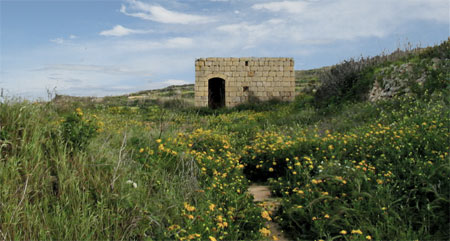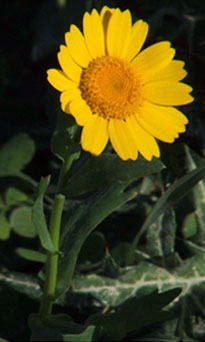A study on the conservation of a weed
Date : 2007
The Corn Marigold (Chrysanthemum segetum L.) is a widely distributed weed in Europe. Its habitat is fields and cultivated ground, largely silicaceous soils. Abandoned fields constitute a candidate habitat for it to grow and reproduce aggressively.

Sir David Dalrymple, in the Annals of Scotland of 1776, stated that allowing Corn Marigold in cultivated land in thirteenth century Scotland was punishable by law. In terms of legislation introduced by Alexander II, farmers were fined a sheep if, in a given parcel of land, the weed was present along with the crops.
According to Edwin Lanfranco, the main contemporary authority on Maltese flora, Chrysanthemum segetum L. is an archaeophyte because it was presumably introduced into the Maltese Islands in ancient times with the introduction of agriculture into the Maltese Islands. He identifies the Chrysanthemum segetum L. as rare in the Maltese Archipelago, and although it is steadily declining in mainland Malta, it is still common in parts of Gozo.
In abandoned fields in Malta, covered by development planning consent, this species was noted. It was identified from the dry flowers. Its identification was confirmed when the plant was in flower.
Chrysanthemum segetum L. is easily propagated by seeds from the mother plant. Thus, the best way to conserve the local gene pool of Chrysanthemum segetum L. is to harvest the seeds from the plants occurring on site and deposit them as directed by the regulatory government agency. It was not deemed advisable to import the seed rather than harvesting it from the plants on site, because of possible genetic variations which may affect the gene pool of the local species.
